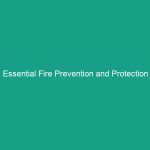Good morning team!
Today, we are going to talk about a crucial aspect of our Workplace Safety and Sustainability: Essential Recycling Practices. Understanding and implementing these practices not only helps us reduce our environmental footprint but also contributes to a safer workplace for all of us. Let’s dive into why recycling is important and how we can do it effectively.
Understanding Essential Recycling Practices
Recycling involves the process of converting waste materials into reusable materials. This is essential not just for environmental health but for Workplace Safety as well. When we recycle properly, we minimize the risk of accidents caused by improperly disposed of materials. Additionally, recycling helps us conserve natural resources and reduce pollution.
Many employees may think that recycling is simply tossing items into the right bin. However, it involves understanding what can be recycled, how to prepare items for recycling, and recognizing the impact of recycling on our daily operations.
Key Hazards, Risks, and Safety Considerations
Improper recycling practices can lead to several Hazards:
- Chemical Exposure: Some recyclable materials, such as batteries and electronics, contain hazardous substances that can pose health risks if not handled properly.
- Injury Risks: Improperly disposed of sharp objects like glass can lead to cuts and injuries.
- Environmental Risks: Contaminated recycling streams can result in waste ending up in landfills instead of being recycled, which defeats the purpose of our efforts.
Ignoring these risks can lead to serious consequences, including accidents and legal penalties, making it imperative to follow proper recycling protocols.
Best Practices, Procedures, & Actionable Advice
Here are some essential recycling practices that everyone should follow:
1. Know What Can Be Recycled
Familiarize yourself with the materials that are accepted in our recycling program. This typically includes:
- Paper and cardboard
- Plastics (check for recycling symbols)
- Metals (aluminum and tin cans)
- Glass (clear, green, and brown)
2. Clean and Sort Recyclables
Before placing items in the recycling bin, make sure they are clean and free of food residues. Contaminated items can ruin entire batches of recyclable materials.
3. Dispose of Hazardous Materials Properly
Items like batteries, electronics, and chemicals require special handling. Always follow the company guidelines for the disposal of hazardous materials.
4. Use the Correct Recycling Bins
Ensure you are using the designated recycling bins available throughout the workplace. Each bin should be clearly labeled to avoid confusion.
5. Educate and Encourage Others
Share what you learn about recycling practices with your colleagues. Encourage discussions and workshops to increase awareness and compliance.
Case Study: A Real-World Example
In 2022, a manufacturing facility faced significant fines due to contamination of their recycling stream. Employees were not aware of the proper recycling Procedures, leading to improper disposal of materials. After a thorough Training session on essential recycling practices, the facility successfully reduced contamination rates by 70% and fostered a culture of Safety and environmental consciousness.
Regulations, Standards, and Compliance
Compliance with recycling Regulations is crucial. Organizations such as OSHA and local environmental agencies have guidelines that must be followed to ensure safety and sustainability. Non-compliance can lead to hefty fines and penalties, and more importantly, it can compromise our safety.
Understanding these regulations helps us protect ourselves and the Environment. Make sure you are familiar with our company’s recycling policies and any local laws pertaining to waste disposal and recycling.
Employee Engagement & Discussion
Let’s take a moment to discuss:
- What recycling challenges have you encountered in the workplace?
- How can we improve our recycling practices as a team?
- What additional resources or training do you think would help enhance our recycling efforts?
Your insights are invaluable, and sharing experiences can lead to a more effective recycling program.
Conclusion & Key Takeaways
In summary, implementing essential recycling practices is vital for ensuring a safer workplace and contributing to environmental sustainability. Remember:
- Know what can be recycled and how to prepare it.
- Dispose of hazardous materials correctly.
- Encourage your peers to engage in recycling efforts.
- Stay informed about compliance regulations.
Thank you for your attention and commitment to these essential recycling practices. Together, we can create a safer workplace while helping the environment. Let’s prioritize recycling in our daily operations!


